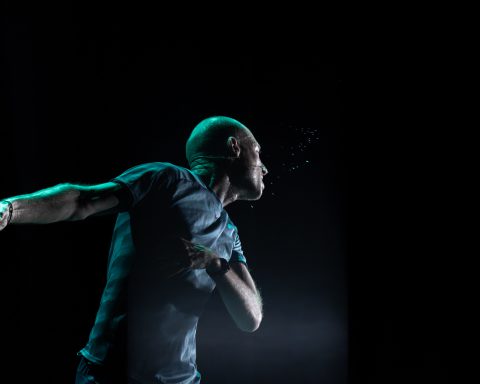Fresh, diverse, current, and relevant. This describes the 32-year-young euro-scene Leipzig dance and theatre festival. Audiences turned out en masse, with 18 sold-out shows and more than 6650 visitors, many of whom were Gen Z’ers. Given the postmillennial themes addressed, this should come as no surprise. The works I saw not only addressed issues but gave practical solutions to them.
Euro-scene looks forward optimistically
“We have to rethink the world and the co-existence of soon-to-be 10 billion people on our planet. And for that, we need new and more narratives of solidarity, empathy, and cooperation. For me, all the invited artists and thinkers in this year’s euro-scene Leipzig program showed that they are an important part of the transformation process that we are currently experiencing. And at all the performances I sensed that this awakening was also gratefully accepted by the Leipzig audience. That makes me personally very happy, but that’s not the point. It is much more important that we look forward together optimistically and get out of the supposed hopelessness. New narratives and answers to pressing questions come from theatre, where else?” Christian Watty, festival director and managing director of euro-scene Leipzig.
Jan Marten: protest and/or die
Euro-scene opened with Jan Marten‘s “Any attempt will end in crushed bodies and shattered bones.” The work grew out of a former project Marten did with queer youth. The participants had a thirst for knowledge, leading them to devour information. Upon reading the diaries of Susan Sontag, they were struck with the realization that what they were experiencing was not new. Despite the lack of technology, maybe the past was not as outdated as it seemed. Perhaps what they were experiencing was simply distinctly human.
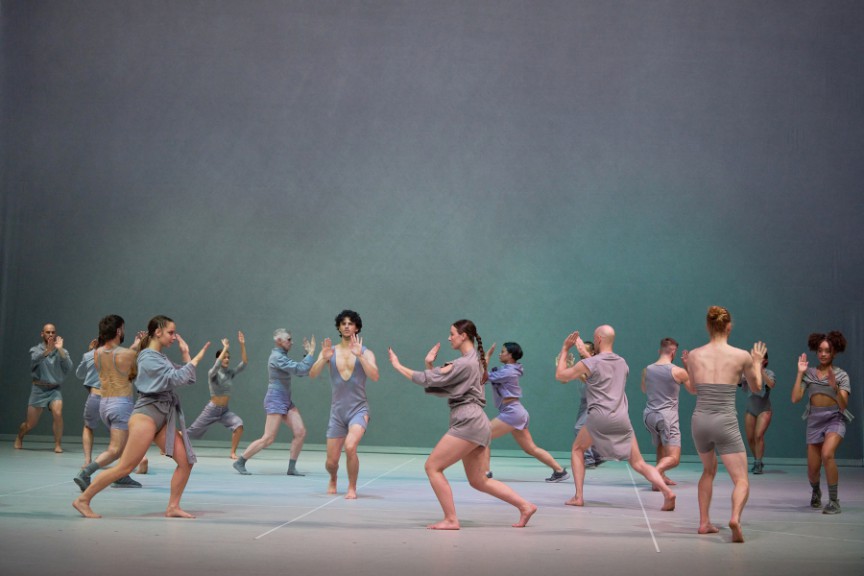
In 2020 COVID brought the world to its knees. We all experienced unprecedented stress, uncertainty, anxiety, and anger. This was due to enforced drastic behavioral changes and economic instability which resulted in a dramatic rise in protests. “Any attempt will end in crushed bodies and shattered bones” looks at how we are individually and collectively motivated to bring about change with our physical presence. Recently we have seen questions we thought were settled rise again and ground seems to have been lost. Has “two steps forward, one step back” become “one step forward three steps back?” Jan looks at the constant battle of protest and recognizes it as more of a monitoring rather than a constant state of progress.
Bodies for change
Jan started dancing at the ripe old age of 17. That put him in a whole different category than others who had started when they were in their single digits. Very quickly, he noticed there weren’t works he felt were right for him. As a choreographer, he has made it his mission to change this. In this production, he had dancers ranging in age from 18 to 73. They not only spanned a range of ages but were diverse in body type and skin color, in addition to lived and dance experience. The process of creating the movements took into account the ideas of the dancers. Work started in 2019 and continued through the pandemic, which meant the process was a bit stop-and-start.
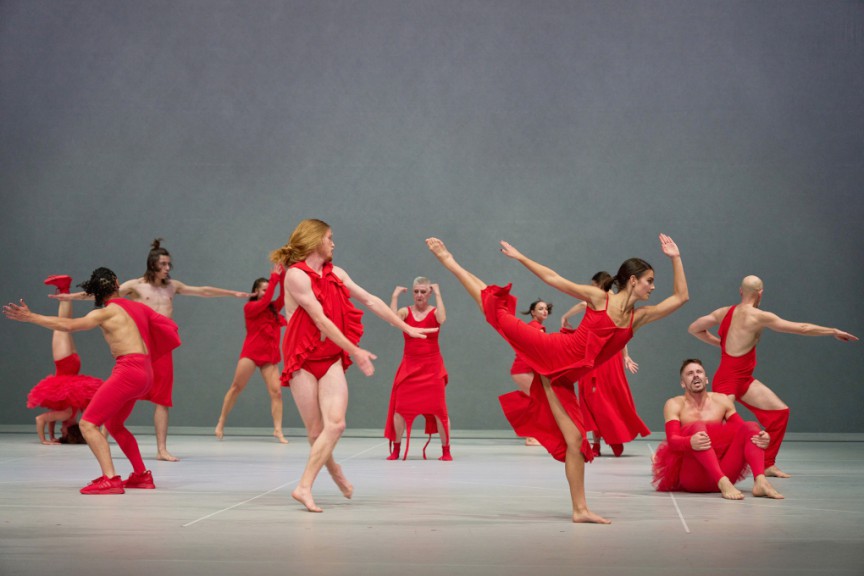
One choreographic movement started with one person circling the perimeter of the stage. On each pass more and more joined him. At first, their steps were individual. At some point in time within the process, they locked step. There was only the sound of their footfall. Caught up in the rhythm, I waited for the collision as they crossed and created new patterns. Sometimes one would fall out, but would always find their way back. It went on for a very long time. It pushed the audience to our limits. Some were mesmerized. Other minds started to wander.
Falling into formation
Protest is not as glamorous as it seems. It’s a lot of hurry up and wait. It is never “over”. One method Jan used to describe this was the use of Concerto pour Clavecin et Cordes Op 40 by Polish composer, Henryk Mikolaj Górecki. Not only did he play it three times, but it has all these breaks in the middle that sound like cues for applause. Interestingly, the audience did applaud at the seemingly appropriate time on the second playing of the song. But of course, there was more to come.
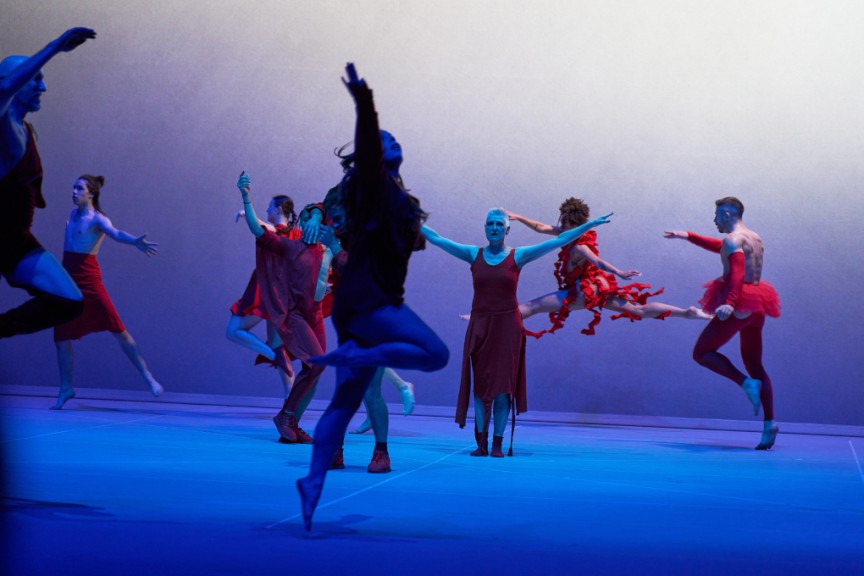
I found the use of music particularly powerful. I feel nourished when I come away from a piece having learned something. This time it was about my home state of North Carolina. On 1 February 1960, four students stood up to segregation by sitting down at the Woolworths lunch counter in Greensboro. How could one be allowed to shop there, but not be allowed to eat there? It might seem absolutely ridiculous to us today, but this is what daily life was like then. Not feeling like the situation had been resolved, they returned the next day, joined by fellow protesters. Four had become more than 15. Day after day, they came back and sat at the counter despite the manager refusing to serve them.
Momentum grew and cafe counter sit-ins spread. By March, there were people at the lunch counters and picketing outside Woolworths in 55 U.S. cities, spread out over 13 states. John Lewis, civil rights leader, said, “You may not have a lot of money and you may not have a lot of power, but you have what Dr. King and Gandhi and others called “soul power”. Just use your body as a non-violent instrument, as a tool. You can change things. You can inspire hundreds and thousands and millions of people to speak up and speak out.”
Hear my pain
Another of the three songs Jan used in “Any attempt will end in crushed bodies and shattered bones” was a song from the time of the Greensboro sit-ins. Written by Maxwell Roach, Triptych: Prayer/Protest/Peace was timeless: simple and elegant, percussion and voice. The voice became increasingly distressed. You could feel the anguish. It was to the point of being too much. You just wanted it to stop. At that moment, social media comments popped up on the screen. “Shut that bitch up!”
The question is, what did you want to stop? Was it the screams or the causation of them? Is the real monster the one hiding behind a device? The demonization of the other is alive and well. That is clear when the “response” to the insurrection which took place in the USA on 6 January is that it was OK because it wasn’t BLM. At some point, you realize that the opposition is also tirelessly protesting. As each side gains ground, the other side loses it.
Despite there seeming to be precious little common ground at the moment, Jan Marten finds a way to come together without losing individuality. Time and time again, the dancers perform their own personal movements, intertwining them with shared ones. Jan quotes Native American poet Paula Gunn Allen, “Snowflakes, leaves, humans, plants, raindrops, stars and molecules all come in communities. The singular cannot really exist.“
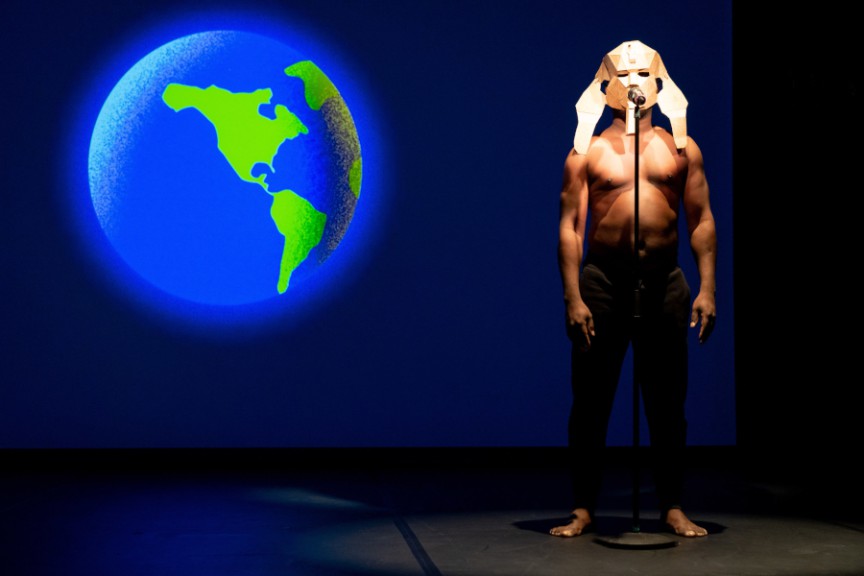
Panaibra Gabriel Canda’s postcolonial Africa
I have to admit my knowledge of Africa and what’s happening in each of its 55 countries is fairly limited. Mozambican choreographer Panaibra Gabriel Canda‘s Mentiras Aplaudidas (Celebrated Lies) gave me a lot to think about. From the first moment, the minimal production challenged colonialism. Panaibra came on stage barefoot and bare chested, wearing black sweats and a digitally mapped cardboard cutout of a Nemes headdress.
The “Egyptian” spoke about the cradle of civilization and about Adam and Eve and their expulsion from the Garden of Eden. He mentioned their sons, Cain and Abel, a story that has long been used to vilify those with darker skin. He talked about Noah and the Ark. At this point I was already questioning what I’d been taught growing up in a Christian household. Then he asked, “Who told you this?” Fake news is as old as time.
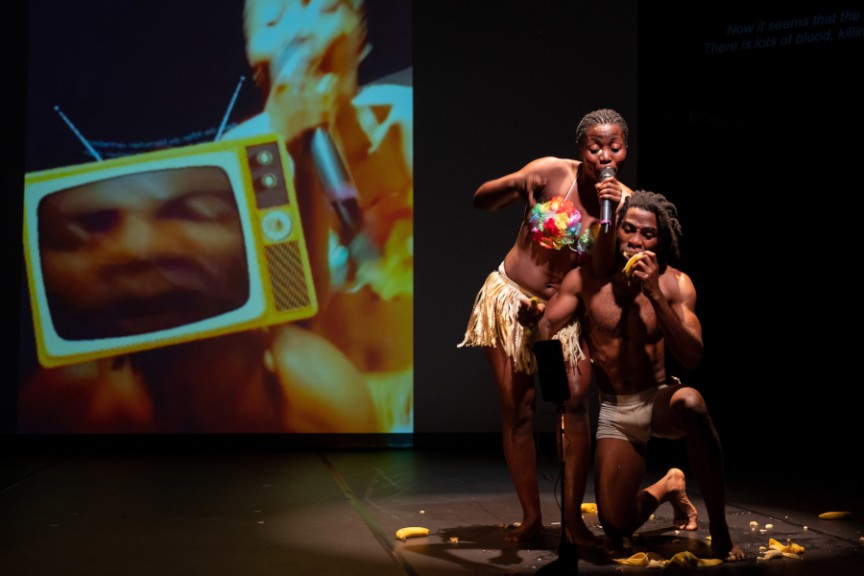
Independence with strings attached
With the masks off, we were lead through a journey that began with the kingdoms of pre-colonial Africa. We saw how it was carved up by the Europeans with no relevance to historical or geographic lines. After hundreds of years of foreign rule, countries were “given their independence”. Unfortunately, their currencies were tied to European banks and their governments were based on European models.
Rather than having autonomy, African nations have continued to be treated like children by their “white saviors”.This was depicted in a scene where two dancers interact with bananas. “Banana”, “monkey” “human”. Two dancers eat, fight over and force-feed bananas. The floor becomes sticky in the free for all. No one can stand on their own two feet.
At times the audience laughed.
I didn’t. I found it painful to watch. Comparing blacks to monkeys has a long history, going back as far as Heraclitus. You would think we would have come past this, but just this spring in France, Brazilian football player Richarlison had a banana thrown at him. Animalization equals dehumanization. Once a population is dehumanized, basic humanitarian rules no longer apply.
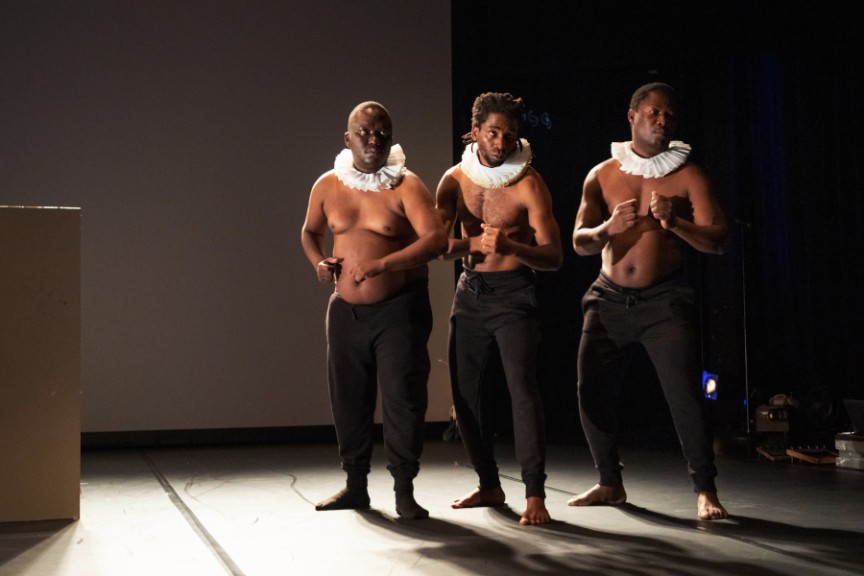
I asked Panaibra about the scene. He added another layer to it. The African population is told they should eat bananas and when they do, they are called monkeys. I hadn’t looked at it that way before. Of course I had only seen an outside perspective. This is why it is so important to listen to authentic voices, and as many of them as possible.
Rich in resources, and still poor
Through the use of mobile phones, we see both the distractions and the possibility for a future. Africa is rich in so many natural resources and yet the people don’t see the benefits. I was moved by a scene set in 2063. Nkosazana sends a Happy New Year email to a dear friend:
“I write to you from the beautiful Ethiopian city of Bahir Dar, located on Lake Tana, as we finalize preparations for the Centenary celebrations of the Organisation of African Unity, which became the African Union in 2002 and laid the foundations for what is now our Confederation of African States (CAS).
Kwame Nkrumah and his generation called on Africans in 1963 to unite or perish. Who would have thought that their dream would one day become a reality. And what a grand reality.”
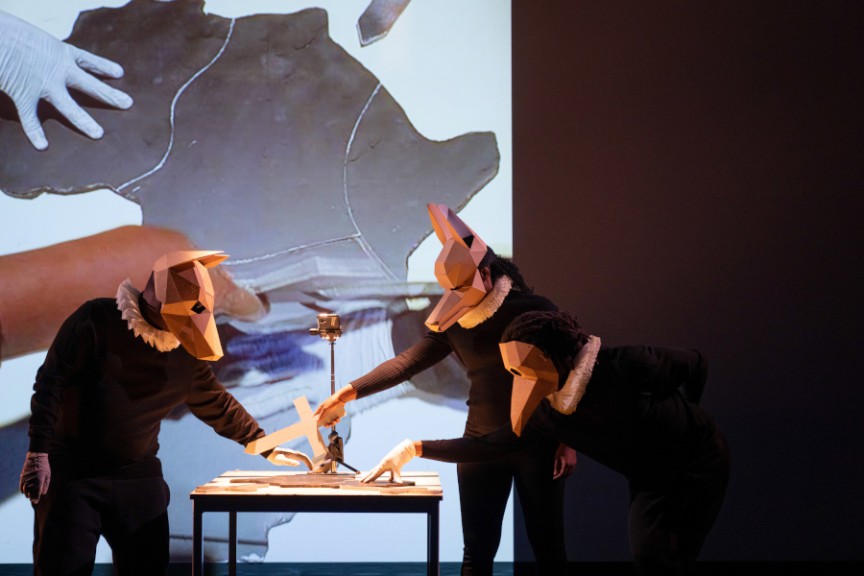
“At the beginning of the twenty-first century, we used to get irritated with foreigners when they treated Africa as one country. As if we were not a continent of over a billion people and 55 sovereign states! But, the advancing global trend towards regional blocks, reminded us that integration and unity is the only way for Africa to leverage its competitive advantage…”
A united Africa
The concept of a united Africa was new to me. Panaibra stressed it would use African social models instead of European ones. From my interactions with other Africans, it seems that they have a strong sense of community. Another part of the email reads, “From the onset, the Diaspora in the traditions of Pan Africanism played its part, through investments, returning to the continent with their skills and contributing not only to their place of origin, but where the opportunities and needs were found.”
Mentiras Aplaudidas managed to deliver a lot of information in a way that was not overwhelming. The use of mobile phones made it accessible and contemporary. It also showed how we can buy into fake news or debunk it. We can travel and take selfies and entertain ourselves or we can unite to move toward change.
Euro-scene looked at contemporary topics that we need to address. I am interested to see what is on the program for the next one.

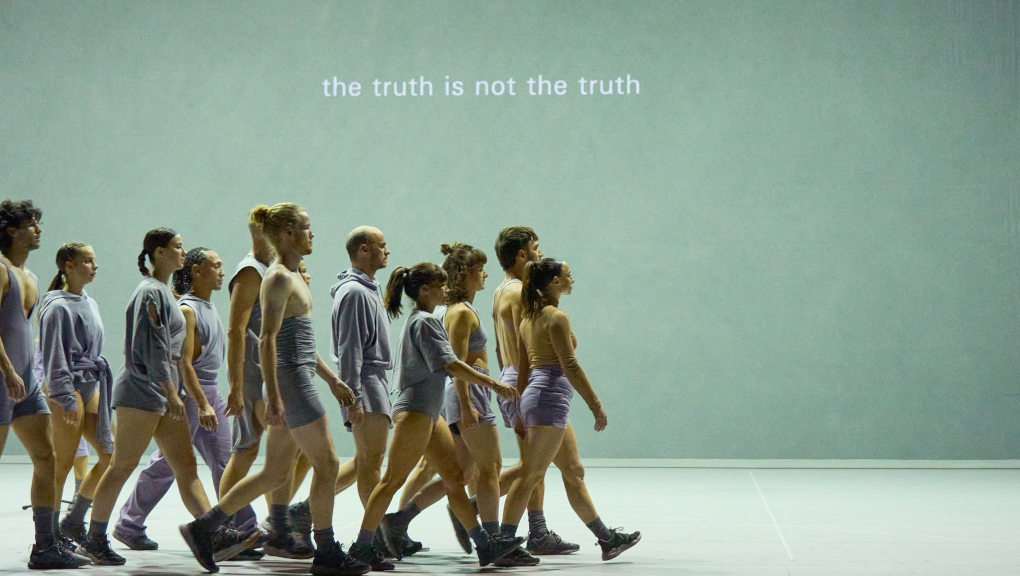

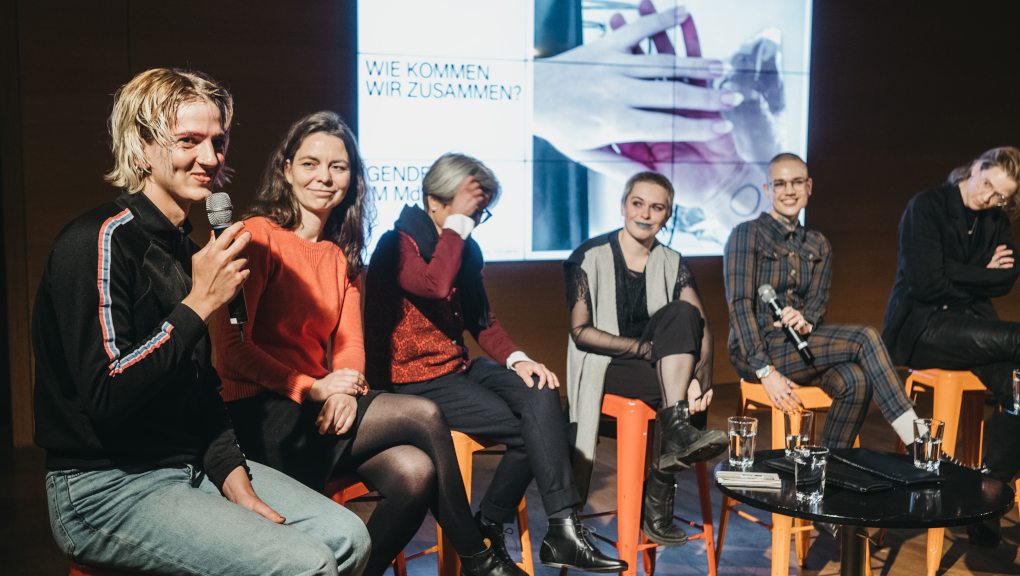

![Wine & Paint event on 9 Nov. 2024 at Felix Restaurant, Leipzig. Photo: Florian Reime (@reime.visuals] / Wine & Paint Leipzig](https://leipglo.com/wp-content/uploads/2024/12/pixelcut-export-e1733056018933-480x384.jpeg)

